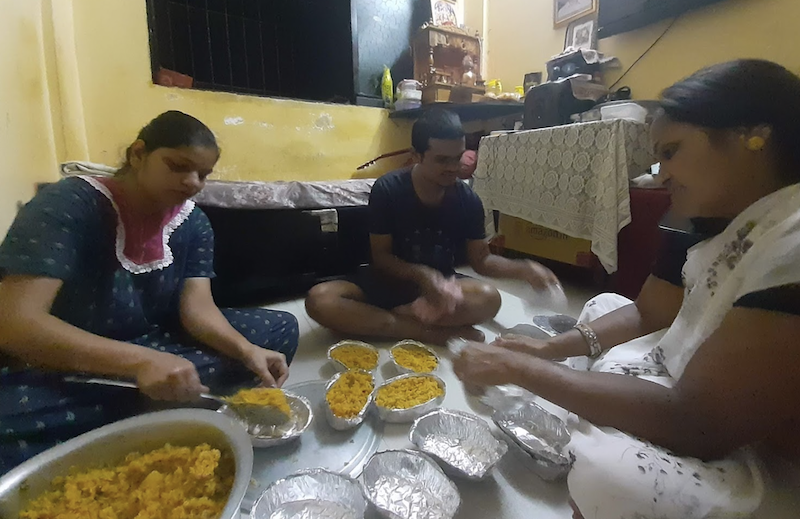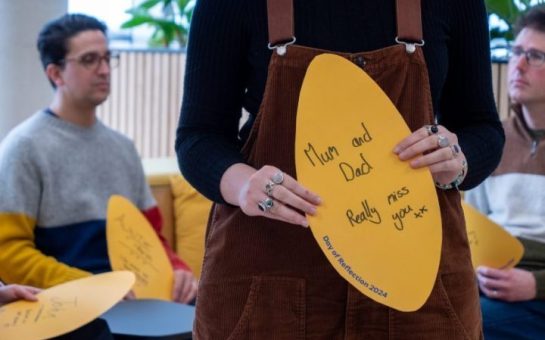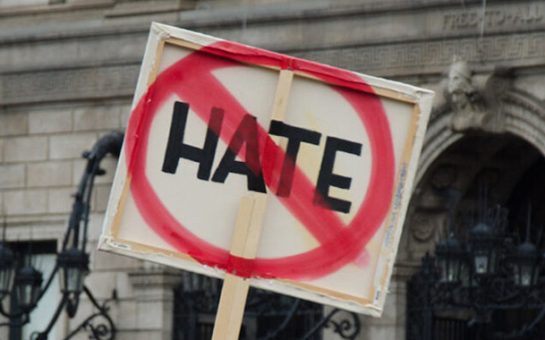![]() By Jay Burgess
By Jay Burgess
May 5 2020, 09.05
Follow @SW_Londoner
Through the kitchen window of his two-room apartment, Rohan Patil watched a pair of health workers carry a loaded stretcher into an ambulance in the dusty sunlight.
A crowd had gathered, sixty strong, many shoulder to shoulder. “When is the vaccine coming?” Rohan asks.
It’s a popular question in Dharavi, one of India’s biggest slums and the setting for the film Slumdog Millionaire.
When Mumbai went into lockdown, the Patil family took action.
All five helped to cook and pack dozens of food parcels every morning. Rakesh would stack them on his red moped and zip the two minutes from their tower block down to the shanties. He left the parcels on his friends’ doorsteps, and they traded hellos.
They were happy to see him.
The Patils knew the shanties. They knew how the rooms were glum for lack of sunlight. How the trapped heat made the air swelter. How the lanes were sometimes so thin that two bodies passing always touched. And how many people used the nearest toilets in the mornings. Around sixty.
“We are telling them [to isolate] but they’re not listening,” Rohan said. “Some are following guidelines, but some are not. In these conditions, it is fair. We are very lucky that we don’t live there anymore.”

Though cases were at a trickle, the media verdict was in: ticking time bomb.
“And it may explode any time!” says Kiran Dighavkar, the fast-talking, battle-worn official leading the response.
His parents, wife and kids beg him not to go on-site, to stay in the office, but to him, that wouldn’t be right. He has worked for 31 days straight, in perpetual crisis mitigation mode.
“The houses are 10ft by 10ft, with 8-10 people staying in each,” he adds. “Asking them to practice social distancing is just a joke. It is next to impossible.”
The facts about Dharavi are punishing. It is one of the most densely populated areas in the world, where one million people live in an area two-thirds the size of Central Park.
It is rife with underlying health conditions fine-tuned for Covid-19 – chronic respiratory diseases, diabetes and hypertension. But many refuse to cooperate with Kiran’s health workers. Disease carries a stigma they cannot afford to bear.
VIDEO: Six days into India’s lockdown, food packets are distributed on Dharavi’s main strip
The Patils’ apartment soon went into a 22-hour lockdown, and they were not allowed to access the shanties anymore. Rohan started getting up early to walk their dog, Ronnie, a well-trained two-year-old labrador with a penchant for boiled eggs in the morning.
Rohan’s mother, Asha, would normally be found lying down on her pullout bed, listlessly watching old Hindi films. She smiles, tiredly, but longs to return to work.
As cases crept into the tens, the atmosphere darkened in the shanties. Some of Rohan’s friends had run out of money and were being supported by friends and family.
High-risk red zones were barricaded off – 125,000 people inside them. Fear was swelling.
“After this crisis, I think the government will look at Dharavi, to rebuild it,” Rohan said.
“Now they know we don’t have proper places to live. Now they know there is a need for separate houses. Now they know we are poor.” He paused, sighed. “Now some are dying. That is it.”
Plans to improve living standards and redevelop Dharavi have fallen apart, repeatedly, for decades. Dysentery, cholera and typhoid epidemics are common there.
“It’s a lack of political will. It’s nothing else, nothing more than that,” explains Sayli Udas-Mankikar, senior fellow at Observer Research Foundation, a nonprofit think-tank based in India.
“Of course this virus is an opportunity to push for something. But there have been other opportunities, such as the floods, and other illnesses.
“Mumbai has been through a lot. Whether this translates into something concrete is very hard to say.”
Tonight, at least, the mood at the Patil’s is restful.
Asha is on a video call, sat up and beaming as she watches her grandson, dressed in a Spiderman outfit climbing up his dad’s motorbike.
Rakesh, Rahul and Rahul’s wife are laughing at a TV drama. Ronnie is snoozing, lying by Rohan’s side. Dinner is ready and we say goodnight. Rohan allows himself to draw beauty from the moment. “It is nice,” he smiles, happily. “We have time to spend with family. Family is everything.”
The moon emerges and the Patil’s go lights-out at midnight.
Kiran Dighavkar sleeps alongside his ever-worried wife. Tomorrow, one million will rise again, to be plunged afresh into the throes of crisis.
“When is the vaccine coming?”
It’s a popular question in Dharavi.



